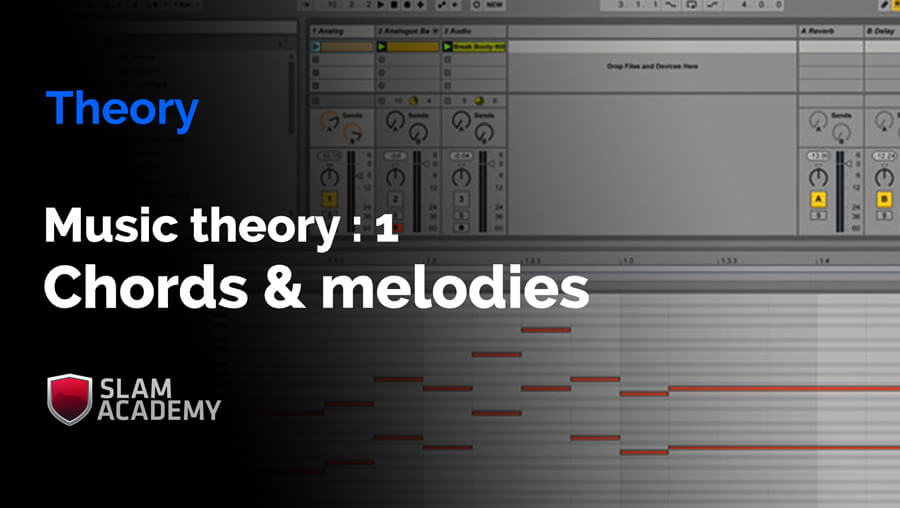
Music Theory for Electronic Musicians
A class designed for the electronic musician that wants to take their tracks to the next level. In this class we will focus on learning how to organize pitches and rhythms to make dynamic and interesting melodies and harmonies. No experience with music theory is necessary. Playing an instrument and reading music is also not necessary. We will be focusing on how to use your DAW as your instrument to create with.
A class designed for any electronic musician who wants to take their tracks to the next level

COURSE FEATURES
- By the end of this course, you will have improved your tracks by understanding how to build chords and melodies that work together.
- 38 individual video tutorials
- 3.5 hours of indepth tuition
- Learn at your own pace, watch as many times as you need to learn the lessons
“Very thorough, in depth explanations that make it easy for beginners to follow along and feel like they understand the basics of music theory”

IS THIS COURSE FOR ME?
- Any level of musician
- No experience reading notes required.
“This is a great introduction to electronic music and music in general for someone like myself who has no musical experience at all. Highly recommend it!”
REQUIREMENTS
- Access to a DAW: any program will do. (GarageBand, logic, pro tools, ardour, ableton live, etc.)

ABOUT YOUR TUTOR
J. Anthony Allen teaches at the University of St. Thomas in St. Paul, MN., and is an Ableton Live Certified Trainer. He is a co-founder and owner of Slam Academy, a multimedia educational space in downtown Minneapolis.
J. Anthony Allen is a versatile creator whose diverse project experience ranges from works written for the Minnesota Orchestra to pieces developed for film, TV, and radio. When he’s not working as a solo artist, Allen is a serial collaborator. His primary collaborative vehicle is the group Ballet Mech, for which Allen is one of three producers.

COURSE OVERVIEW
Class Overview
- Class Overview
Understanding Music Theory from an Electronic Music perspective
- The Piano Roll Editor
- Octaves
- Using Octaves
- The Black Keys (not the band)
- Finding C and Middle C
- Section 1 Summary
The Perfect 5th, and Being “In Key”
- The Perfect Fifth
- Finding Fifths
- Being “In Key”
- The Pattern of a Key
- Fifth Examples

COURSE OVERVIEW
More With Keys, The Third, and The Basic Triad
- Moveable Patterns
- The Major and Minor Third
- Building Triads
- Chord Progressions
Diatonic Chord Progressions
- What is Diatonic?
- Finding All The Chords
- Roman Numerals
- Example Song Analysis No.1
- Inversions
7th Chords
- 7th Chords Overview
- Diatonic 7th Chords
- Maj7 (Major 7) Example
- Dominant 7th Chords
- Blues and the 7th Chord

COURSE OVERVIEW
The Other Intervals
- The Fourth
- The Second
- The Sixth
- Song Analysis No. 2
Wrap Up
- Wrap Up
- Some Extra Video Resources
Updates! Some answers to popular questions.
- Question 1: Making the F# and C# chords in D Major
- Question 2: Inversions
- Question 3: Changing Keys
- Question 4: Can I use the Ableton Trial version?
- Question 5: Using MuseScore
Reviews of this product
Reviews require cookies, click here to change cookie settings.
